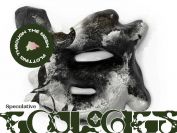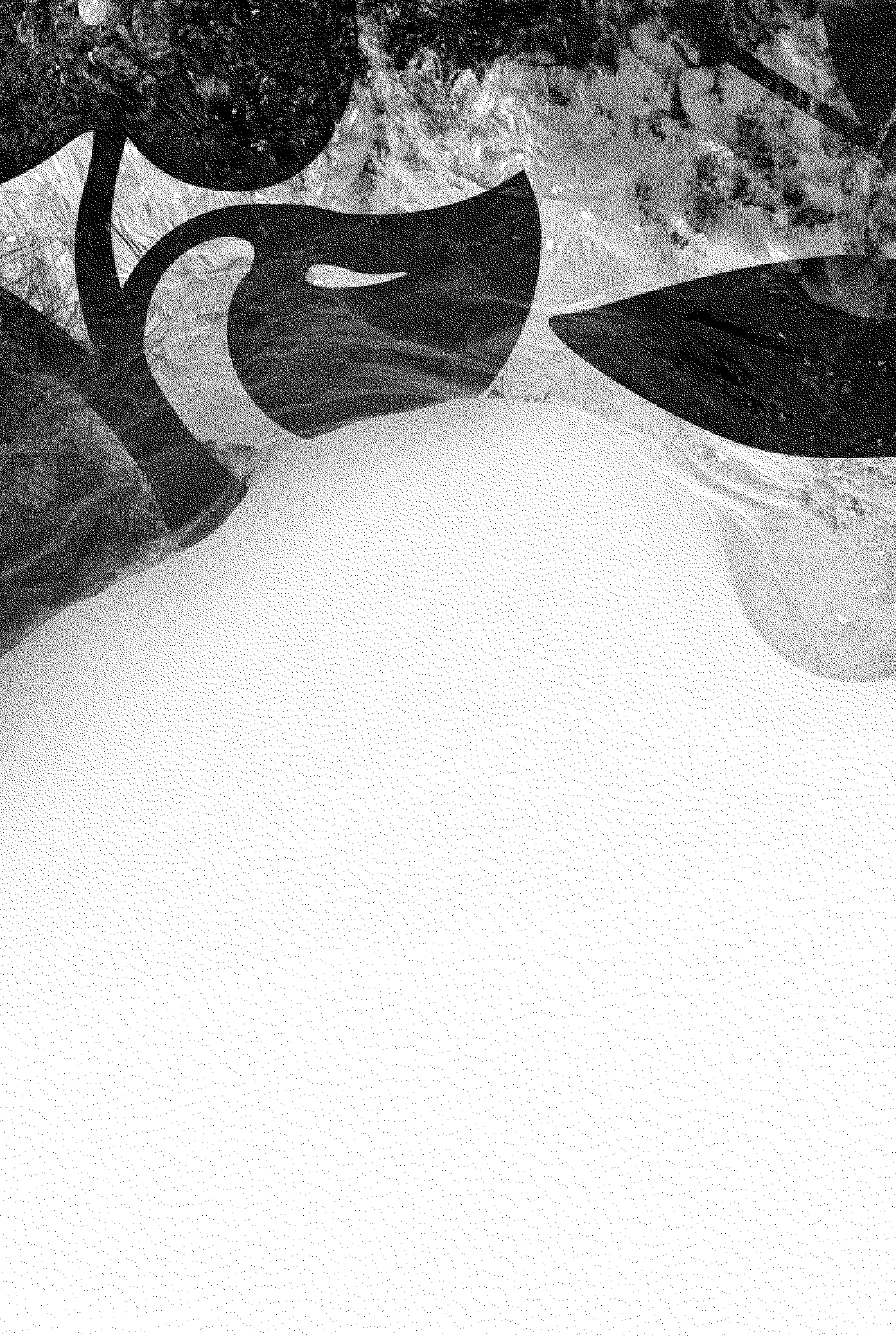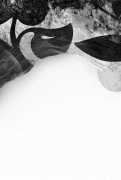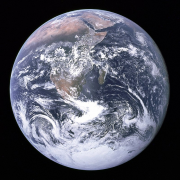In this essay, Udo Noll focuses on the carrying capacity of contempoary cloud infrastructure and, through the work of Paulus Niavis, finds a connection between the early modern mining of coal in the Ore Mountains, and the currently persisting extractivist approach to the Earth’s mineral resources. What possibilities exist for leaving behind the vicious circle of biospheric destruction in the hunt for decreasingly available fossil fuels and mineral resources?
Injuries
During the second half of the 15th century, the region between today's Schneeberg in Saxony and the Czech town of Jáchymov experienced the sound of the second, so-called “Great” Berggeschrey.1 Similar to the 19th-century American gold rush, the discovery of extensive silver deposits led to a rush of miners, craftsmen, merchants and settlers into the area that later received the name Erzgebirge, Krušné hory, or Ore mountains. The growing prosperity of the region through mining was accompanied by massive interventions in nature. The humanist scholar Paul Schneevogel, aka Paulus Niavis2, born around 1460 in today’s Cheb, wrote a remarkable work in view of the destruction of nature, which is considered to be the first literary work about mining in the Erzgebirge.
Iudicium Iovis or The Tribunal of the Gods on Mining 3 is an allegorical narrative which deals with man’s right to plunder nature. The Gods represent the cause of the maltreated Mother Earth. In the dock sits homo montanus, the miner:
The earth, according to its lawyers Mercury and Minerva, bears fruits year after year with which it nourishes and sustains all living beings (alit atque sustentat) … But with this goodness does not agree, man penetrates into the intestines of his mother, rumbles through her body, injures and damages all inner parts. So he finally tears up the whole body and completely paralyses its forces. […] You murderer! Look at her! The one who not only nourishes you and keeps you alive (nutrit et in vita conservat), but also takes you into her womb after your death, from which you came … In you there is no trace of love for the one who bore you?4
Here an archaic goddess of ancient Europe, Chaos’ daughter Gaia, appears in her form as Mother Earth. Since antiquity, she has been influential for religions and science, as the artist, daedala tellus, and mother of all becoming, embodying creativity and craftsmanship. In Niavis’ narrative, however, Gaia is in critical condition, her body seriously injured, her beauty is stained, fertility and vitality have been depleted. Man’s greed for metals has deeply disturbed her integrity. The miner stands accused. But in the further course of the trial, however, he calls her an evil stepmother hiding precious metals in the depth of her body. He argues rationally and economically, defends mining as part of human nature and therefore culture, and denies any guilt. Thus, he convinces the judging god, the complaint is dismissed. Mother Earth must endure man’s actions.
At this historical turning-point, a three-fold leave-taking occurs: from the earth as daedala tellus, from the earth as the mother’s body, and from the aesthetic and ethical insight into the predestined wholeness of nature. This is replaced by technical instrumental labour and scientific knowledge. The earth becomes dead material, deanimated and anaesthetic.5
However, the complaint about the rape of the earth is serious and justified, and that is apparently also known to the court. It sends a gloomy warning after the verdict, that mother Earth will sooner or later resort to self-help against man:
Yet their bodies are finally devoured by the earth and suffocated by evil weather; he is poisoned by wine, afflicted by hunger, remaining ignorant of what its best is: these and many other dangers are man's lot and destiny.6
The text by Niavis expresses a conflict. The self-confident miner declares the earth as a resource and claims the right for exploitation, accepting the destruction of nature. Appeals to the preservation of creation remain largely unheard and without consequences. Mining as a key early-modern industry continues to develop, unencumbered by sustainability considerations or animistic notions of the earth as a body. Formerly animate nature is disenchanted and objectified and thus moral scruples are discarded. It gives expression to the idea of the supremacy of man.
500 years after Paulus Niavis, after the third Berggeschrey in that region faded out, and after the discovery and exploitation of huge uranium deposits which were used during the Cold War to produce Soviet nuclear weapons7, the region is in disarray. The consequences of these centuries-long interventions in nature and cultural landscapes are serious and require massive measures to be taken for an unforeseeable period into the future. The ecological conditions of air, soil and water in post-mining landscapes are monitored permanently by networks of sensors, in order to prevent further damage to humans and nature.
Networks
On August 5, 1858, an electrical connection was established between Ireland and Newfoundland. The alternating current was weak and slow, so a mirror galvanometer had to be used to separate the signal from noise. The transmission of the British Queen’s greeting message to the American President took 16 hours, even though it only contained 103 words.8
In his narrative of the same name, Austrian novelist Stefan Zweig describes the laying of the world’s first submarine cable, and the first words across the ocean as one of the “decisive moments in history.”9
In the course of the following decades, technology continuously improves. Submarine cables connect countries and continents, landline telephone networks expand, and from the second half of the 20th century onwards, satellite transmissions and fiber optic lines accelerate and distribute computing and communications.
The Computer was very slow. But The Computer has done nothing since then but get faster, become more automated, and expand. […] If the network is The Computer, then its motherboard is the crust of Planet Earth. This may be the single biggest drag on the growth of The Computer, because Mother Earth was not designed to be a motherboard.10
Infrastructures of the virtual emerge, attached to nodes with concrete geographical coordinates and with the potential to change the geometry of the world of commerce, politics and ideas that people live in. The networks, data centers and relay stations of these infrastructures are firmly anchored in the ground of physical and political/economic realities, at locations with secure energy supplies, in guarded buildings and with access to specialized labor to ensure operation. One hundred fifty years after the first submarine cable was laid, the global network itself has become a critical infrastructure.11 Moreover, it has become a mental blueprint and central metaphor for all sorts of relationships, whether they are of a technical, political, ecological or social kind. A fluid geometry of a hybrid space, in which information and geography interfere and overlap at the user’s location:
Never before have cities been underlaid and arched, penetrated and networked to such an extent by a system that is only loosely connected to the material body of the city and yet takes in, digitally represents, processes, evaluates, controls and administers every relevant process. And this at thousands of places, which themselves are hardly coordinated with each other, which work semi-autonomously, grasp certain sectors overprecisely and hide everything else absolutely, but always and only do one thing: calculate and create readable symbolic representations on the interface, which in turn represent neither the inside of the computer nor the outside of the city reality.”12
However, opacity, lack of knowledge, smart mobile devices and low latency in communications may foster the feeling of a strange weightlessness of the medium, as if it had got rid of its physical preconditions and restrictions, and would not be firmly anchored in the ground. With the metaphor of The Cloud, this vague and diffuse thing has found its widely accepted expression, for the rather hidden data processing centers of the digital economy.
Cloud formations are aesthetic things, fleeting and with blurred boundaries, they accumulate vastly and, although they are gigantic, are in constant dissolution. They are both objects of physical reality as well as imagination. This cloud image, however, obscures the ownership and power relations of the infrastructures. Its image is defocusing, as technical and economic connections become blurred. The cloud appears as a global sphere of unlimited data storage capacity and computing power, which, in conjunction with artificial intelligence, data mining and machine learning, is ascribed enormous problem-solving potential. Depending on the actors and stakeholders involved, this ranges from total monitoring to solving human problems.13
In the early 21st century, Earth is surrounded by a sphere of increasing technical intelligence, a second nature, woven from the ground to the outer regions of the homosphere into a mesh of data links and communication relationships that contains, locates and connects almost every thing and person on the surface of the Earth.
Anamnesis
She wore a green robe. Tears streamed out of her eyes. Her head was wounded, her dress hung torn, and you could see how her body was pierced so many times… full of wounds and splattered with blood…14
The shape of Mother Earth in Paul Niavi’s text is pathetic. But the image behind becomes frighteningly familiar. A few centuries of industrial development, and unbridled consumption of natural resources have severely damaged almost all ecosystems, triggered mass extinctions of animal and plant species, and brought relevant global conditions of life close to dangerous tipping points beyond which self-reinforcing mechanisms could make the Earth a hostile place to live.15 The ecological crisis calls technical progress into question:
[…] no society is sure to this day whether its development is guided by “good knowledge.” The fears that still underlie the criticism of science and technology today are fed by the idea that something could be wrong with the basic structure of knowledge production […] it could be that man, unconscious in the enormous efforts of civilization to improve his life and secure happiness, causes his misfortune, even his downfall.16
Meanwhile, the idea of the earth as a living organism, as the essential sustainer of all life, has by no means disappeared. Instead, it has gained new strength and consent, by researching the complex ecological balances of the planet, and in the face of depletion and destruction of nature. In the 1970s, biophysicist James Lovelock and microbiologist Lynn Margulis formulated the influential Gaia hypothesis, which saw the Earth as a self-organizing organism.17 It subsequently informed and influenced an interdisciplinary scientific approach that deals with the exploration of the Earth system as the sum of physical, chemical, biological and social components, processes and interactions.18
The raw material of this Earth system science is gigantic amounts of data. The tools for its processing are the cloud computer centers of global infrastructure providers, such as Alphabet/Google and Amazon Web Services, among others.
It seems that the hidden complexity of ecosystems can only be adequately addressed with an equally complex network of measuring instruments. The image of a patient emerges: a body covered with sensors for monitoring breathing, heartbeat and vital functions, connected to intensive care devices, infusions, dialysis and catheters for cleaning and exchanging vital fluids.
The Gaia of the pre-industrial era was able to adequately protect and feed its human children. Now the situation is about to reverse, the mother planet appears worn out and devastated, and some inhabitants ask themselves, increasingly nervous, what measures should be taken and why. The diagnosis is by no means clear, neither are the underlying worldviews and ideas of nature. Ethical reasoning, ideas of preservation, sustainability and downscaling meet ideologies of economic growth, technological fixes and human supremacy over other lifeforms.
The uncertainty in these questions leads, among others, to ever larger data collections, fed by a variety of sensors, from academic research and industrial networks, installed in habitats worldwide, continuously monitoring the environment in real time.19
GPS location data, a gyrometer to measure micromotion patterns and create motion profiles. Light intensity, humidity, temperature, noise and images are also recorded. Even radar is used to detect even the smallest creatures such as insects.20
Citizen Science projects enable people’s participation in research projects, which greatly increases the density and distribution of sensors, as well as their acceptance. Smartphones can pick up acoustic signals and use them to identify species, or built-in cameras to measure pollutant particles in the air. Engaged environmentalists and bioacousticians install networked microphones in forests and develop statistical indicators from the analyzed sound recordings to determine biodiversity or the impact of anthropogenic noise on the local ecosystem:
[...] sounds have an important role in detecting early signs of animal stress connected to climate change from the scale of individual species, populations, communities, and landscapes. The study of sound with an ecological perspective is a focus of ecoacoustics.21
And Dimitri Ponikaris writes that
Here we have scratched the surface of what can be learned using the latest software and hardware developments to gain insights […] all around the globe. It is important that we are able to rapidly uptake and utilize these emerging technologies, as the challenges that the natural world is facing are growing rapidly too.22
Since the introduction of Google’s Earth Engine in 2016, the company has created a data set of planetary scale from digitized satellite photos out of the Landsat missions, which is now available to scientists, researchers and developers. The project is unrivaled in size and analysis capabilities. In just a few months, researchers have created a virtual time machine that maps the location and temporal distribution of water surfaces on a global scale over the last four decades and provides statistics on their extent and change.23 Ten thousand cloud CPUs utilized with a total of 6 million hours of computing time would have taken about 1200 years to calculate on a contemporary home computer.
The list of recent sensing projects, from local to global scale, could be easily continued. It shows how much hope is placed in the algorithmic anamnesis of the unstable and weakening Earth system. As if only a closer look into the excavated data stock were needed. As if something had been overlooked and the answers were within reach. As if a new green technology were about to be discovered. As if the analytical power of combining sensors and data mining, artificial intelligence and machine learning were the key to healing the planet. Maybe it is, this is by no means excluded. But the willingness of societies to organize their actions along the dictum of an AI may yet be limited. On the other hand, current climate models, global estimates and predictions are created by this kind of technology and are thus already part of the decision-making processes. We’ve long since allowed technology to make decisions.
But there is a problem with these enterprises. Simply put, within a short period of time the impacts of technological progress and growth have pushed the biosphere to its limits. Why would one trust its promises of a new technological deal, even a green one? Sociologist Eileen Crist calls it “a neo-green agenda, a pervasive worldview that imbues the trends of more with a cachet of inevitability and legitimacy”,24 which would include initiatives such as climate geoengineering, desalination, de-extinction, and off-planet colonization.
The neo-green perspective would have us (enthusiastically or reluctantly) embrace a world that is massively complicated, mega-technological, engineered, risk-tending, used, biologically impoverished, overpopulated, and filled with (equitably shared) consumer stuff. The sole virtue of such a world is that it saves the historically bequeathed phenomenon of human rule.25
This, however, resembles the miner’s attitude in Paulus Niavis’ narration.
Answers
In Niavi’s text, there was the prophecy that Mother Earth would devour men and bad weather would suffocate them. Although this means the ancient miner’s underground working environment, it creates discomfort in the light of current events. The Earth responds; Gaia, it seems, dictates the agenda.
Dead zones and garbage patches of enormous proportions emerge in oceans, heat and drought records are surpassed in succession, polar ice and glaciers are melting rapidly, and global extinction of species accelerates by magnitude.26 The pressure on society increases by rising costs and social tension, public and private assets are destroyed by extreme weather phenomena, health is threatened by poison, and plastic appearing all over the food chain. On the sidelines of the 2019 G7 Summit in Biarritz, France’s Emmanuel Macron declares the ecological question to be absolutely central, and tweets: #MakeOurPlanetGreatAgain27.
Decades earlier, American astronaut James Irwin once said this about the view of planet Earth (whose photo became world-famous as the Blue Marble):
“Seeing this has to change a man.”28
Between these two statements lie more than 40 years of ecological decline. The Marble illustrates a problem: dimensions of Nature exceed any human measure. When problems scale to planetary size, no reasonable cognition is possible, and the individual fails in their problem-solving strategies. This causes feelings of powerlessness and despair, brought about by an unacceptable dissonance. Continuous alerting is not matched by adequate options for action, and ignorance is the result. Current climate debates are full of such aporia. Bruno Latour writes of the danger of going mad in the face of the loss of soil and language:
We can’t help but wonder how the daily news of the state of the planet is affecting our mental state. How could the fear of not being able to respond not make us feel that we are done?29
and elsewhere he writes:
It is no longer a past lost forever that makes us cry with misery, but the soil that disappears before our eyes [...] This is the most radical effect of the new climatic conditions: The climate crisis, the general extinction of species, the sterilization of landscapes are driving us crazy.30
A rational response to an emergency would be to take appropriate measures to address and downscale the causes of the crisis on a global scale. But human arrogance and an ideology of growth does not accept ideas of limitation. Latour may be right here. While waiting for global(ized) politics or institutions to come, or any techno-utopian fix for the planet, we literally lose ground, and most likely our minds along with it.
However, it may be worth looking at our own feet, not only to recognize our own footprint, but also to stay sane. Human sprawl has long since become a reality, and many things are lost without us noticing. We should start to believe what we already know. The earth, as soil, would be key to reconnect our needs and habits, and not only to the ground. Every single square meter of open ground is vital to a variety of lifeforms. This begins on balconies and yards, includes our gardens, any grass strip, green patch and waste land within your reach. Imagine the idea of wildlife corridors within your neighborhood, for anything that still lives there.
Biodiversity in cities increases, as rural landscapes deplete because of industrial agriculture and excessive land use. On a larger scale, connecting habitats with corridors, for species to exchange and migrate has been an aspired practice in nature conservation.31 And it’s the only chance to keep diversity. Sustainability and preservation are not new concepts, as Paulus Niavis’ writings from 1490 have already shown. They have been part of human culture ever since.
We are familiar with networking and understand the dependencies. We should apply our senses as sensors and engage in it in our very own practice, from art to agriculture, whether you deep-root a narrative of better being, teach a friend, or plant a tree. Instead of getting discouraged in the face of globalized destruction, we should go radically local, literally to the soil, and take real responsibility for our actions, for a project idea, a patch of ground, a piece of public space, or whatever, is in reach and is doable. Attention and resistance are needed, because nothing that can be monetized is safe from the miner’s greed for profit.



